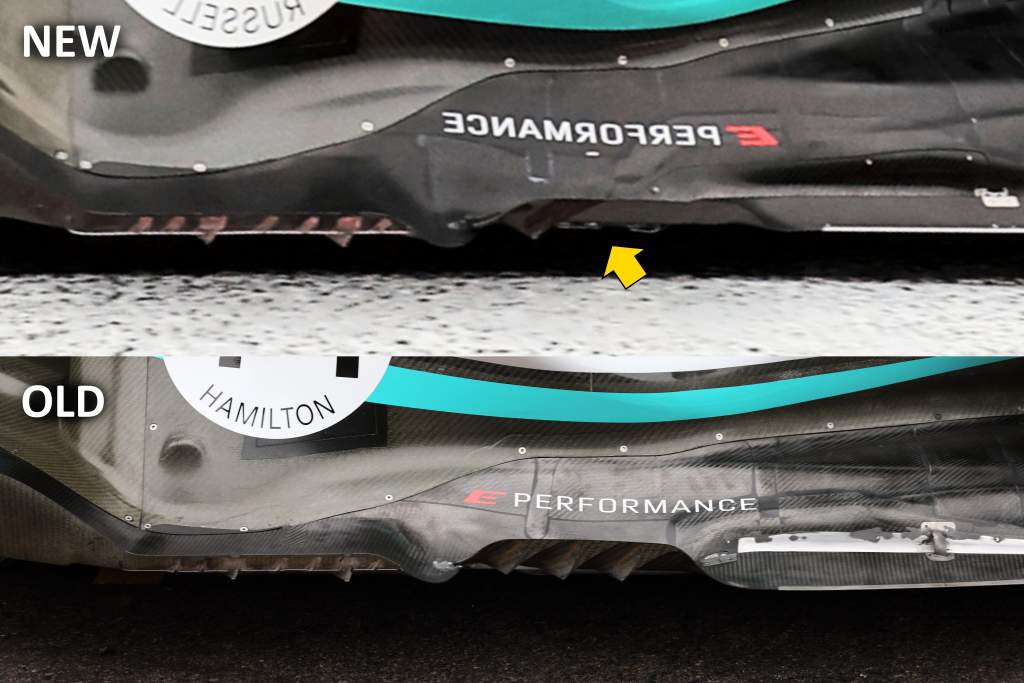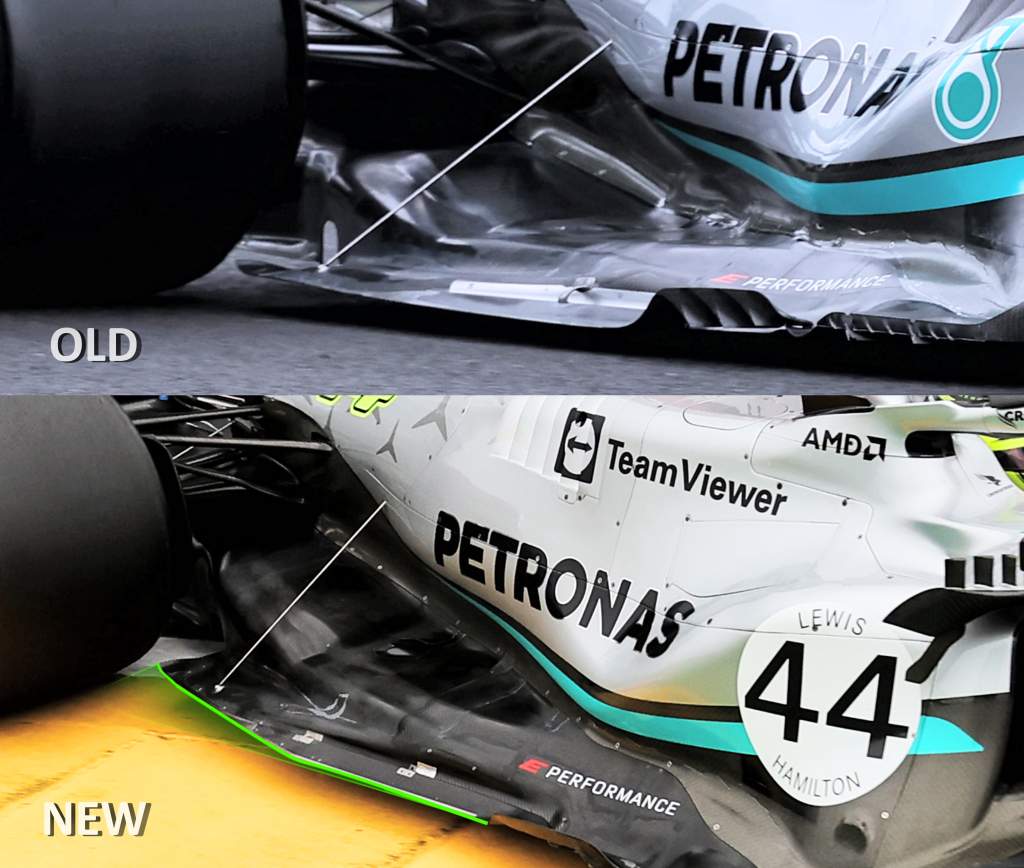Up Next

Mercedes is still working on the detail of the edge of the front half of its underfloor, with a new version trialled at Spa on Friday.

The detail change is to improve performance in the area aimed at making the rear half not so critical to ride height, and in turn the gap to the track surface.
Mercedes still retains the flat foot area on the rear half, which is shaded in green.

For me, this is the area that is causing Mercedes most problems and it is the area that is critical to the ground clearance. Ferrari and Red Bull have much more aerodynamic-sealing detail in this area, as opposed to what Mercedes has – just a simple gap to the ground.
As the speed increases, this gap to the track surface reduces and with that the underfloor downforce builds up. You can look at this two ways: one – if it can be run close to the ground, you can get massive aerodynamic loads for high-speed corners; two – when the car slows down, the ride height increases and you lose those loads so it is not so good in slow- and medium-speed corners.
The temptation is then to run the car stiffer to get more consistency over that gap from the side of the floor to the track surface. But then you get the bouncing.
The wings
Mercedes was also, like every team, experimenting with its rear wing levels on Friday.
Spa is one of the most difficult circuits to set your aerodynamic compromise. The first section is all about top speed, the middle section is about downforce and the third section is about straightline speed. Add to that a bit of inclement weather and it really is a coin toss to decide.
In qualifying, especially with DRS, your laptime will be better with a reasonable level of downforce. But if that’s your choice you need to qualify up front and get away immediately, otherwise when the DRS comes into play someone behind you will simply drive past you on the Kemmel straight or on the return to the chicane.

To get the best compromise, Mercedes reduced the chord length (yellow line) of the rear wing flap for FP2.
I’m not a fan of going about it this way as it lowers the trailing edge, so in effect it is not the most efficient solution. But in these days of budget control, needs must.
Ferrari also changed its rear wing approach between Friday’s two sessions.
It has been bitten a few times this year by running too much downforce, and with it drag. Yes, it meant the car could do a good laptime but it left Ferrari vulnerable in the race.

Ferrari made a complete assembly change between FP1 and FP2, as opposed to trimming the rear flap as Mercedes did. So it was more prepared for this change than Mercedes was.
Perhaps this was because, after engine penalties, Leclerc will be starting towards the back of the grid so will have a lot of overtaking to do before he can get to the podium. It’s going to be interesting to see him and Max Verstappen, who also starts at the back with engine penalties, fight their way through.
The weather could play a big role in who has made the correct decision on wing levels. But to know who has got it right or wrong, we will need to wait until the chequered flag falls on Sunday.



